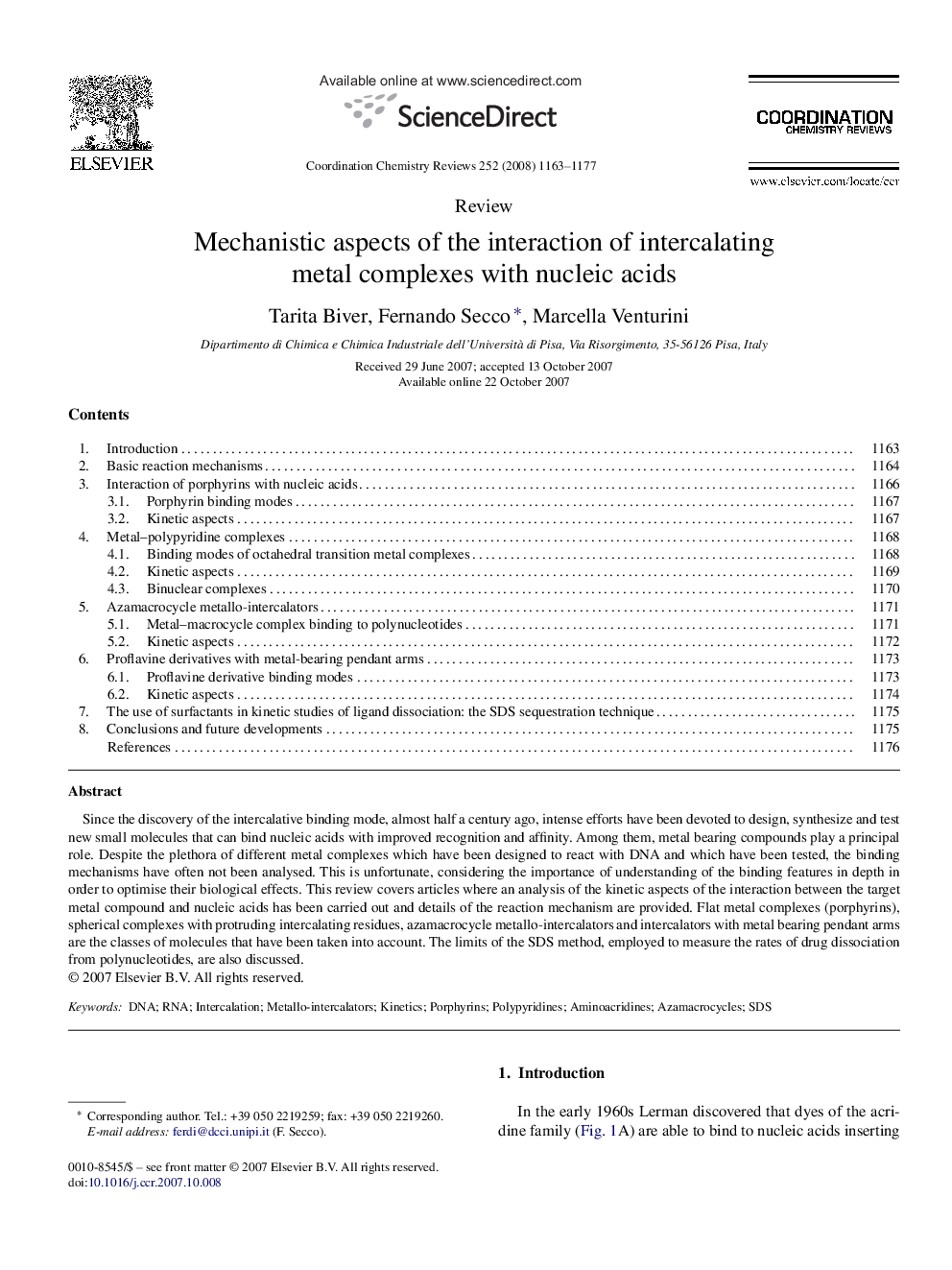| Article ID | Journal | Published Year | Pages | File Type |
|---|---|---|---|---|
| 1301274 | Coordination Chemistry Reviews | 2008 | 15 Pages |
Since the discovery of the intercalative binding mode, almost half a century ago, intense efforts have been devoted to design, synthesize and test new small molecules that can bind nucleic acids with improved recognition and affinity. Among them, metal bearing compounds play a principal role. Despite the plethora of different metal complexes which have been designed to react with DNA and which have been tested, the binding mechanisms have often not been analysed. This is unfortunate, considering the importance of understanding of the binding features in depth in order to optimise their biological effects. This review covers articles where an analysis of the kinetic aspects of the interaction between the target metal compound and nucleic acids has been carried out and details of the reaction mechanism are provided. Flat metal complexes (porphyrins), spherical complexes with protruding intercalating residues, azamacrocycle metallo-intercalators and intercalators with metal bearing pendant arms are the classes of molecules that have been taken into account. The limits of the SDS method, employed to measure the rates of drug dissociation from polynucleotides, are also discussed.
